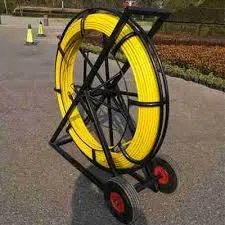
-
 Afrikaans
Afrikaans -
 Albanian
Albanian -
 Amharic
Amharic -
 Arabic
Arabic -
 Armenian
Armenian -
 Azerbaijani
Azerbaijani -
 Basque
Basque -
 Belarusian
Belarusian -
 Bengali
Bengali -
 Bosnian
Bosnian -
 Bulgarian
Bulgarian -
 Catalan
Catalan -
 Cebuano
Cebuano -
 Corsican
Corsican -
 Croatian
Croatian -
 Czech
Czech -
 Danish
Danish -
 Dutch
Dutch -
 English
English -
 Esperanto
Esperanto -
 Estonian
Estonian -
 Finnish
Finnish -
 French
French -
 Frisian
Frisian -
 Galician
Galician -
 Georgian
Georgian -
 German
German -
 Greek
Greek -
 Gujarati
Gujarati -
 Haitian Creole
Haitian Creole -
 hausa
hausa -
 hawaiian
hawaiian -
 Hebrew
Hebrew -
 Hindi
Hindi -
 Miao
Miao -
 Hungarian
Hungarian -
 Icelandic
Icelandic -
 igbo
igbo -
 Indonesian
Indonesian -
 irish
irish -
 Italian
Italian -
 Japanese
Japanese -
 Javanese
Javanese -
 Kannada
Kannada -
 kazakh
kazakh -
 Khmer
Khmer -
 Rwandese
Rwandese -
 Korean
Korean -
 Kurdish
Kurdish -
 Kyrgyz
Kyrgyz -
 Lao
Lao -
 Latin
Latin -
 Latvian
Latvian -
 Lithuanian
Lithuanian -
 Luxembourgish
Luxembourgish -
 Macedonian
Macedonian -
 Malgashi
Malgashi -
 Malay
Malay -
 Malayalam
Malayalam -
 Maltese
Maltese -
 Maori
Maori -
 Marathi
Marathi -
 Mongolian
Mongolian -
 Myanmar
Myanmar -
 Nepali
Nepali -
 Norwegian
Norwegian -
 Norwegian
Norwegian -
 Occitan
Occitan -
 Pashto
Pashto -
 Persian
Persian -
 Polish
Polish -
 Portuguese
Portuguese -
 Punjabi
Punjabi -
 Romanian
Romanian -
 Russian
Russian -
 Samoan
Samoan -
 Scottish Gaelic
Scottish Gaelic -
 Serbian
Serbian -
 Sesotho
Sesotho -
 Shona
Shona -
 Sindhi
Sindhi -
 Sinhala
Sinhala -
 Slovak
Slovak -
 Slovenian
Slovenian -
 Somali
Somali -
 Spanish
Spanish -
 Sundanese
Sundanese -
 Swahili
Swahili -
 Swedish
Swedish -
 Tagalog
Tagalog -
 Tajik
Tajik -
 Tamil
Tamil -
 Tatar
Tatar -
 Telugu
Telugu -
 Thai
Thai -
 Turkish
Turkish -
 Turkmen
Turkmen -
 Ukrainian
Ukrainian -
 Urdu
Urdu -
 Uighur
Uighur -
 Uzbek
Uzbek -
 Vietnamese
Vietnamese -
 Welsh
Welsh -
 Bantu
Bantu -
 Yiddish
Yiddish -
 Yoruba
Yoruba -
 Zulu
Zulu


Sep . 23, 2024 06:14 Back to list
lever hoist safety
Lever Hoist Safety Essential Guidelines for Safe Operation
Lever hoists are indispensable tools in various industries, enabling workers to lift heavy loads efficiently and safely. However, with their power comes responsibility. Ensuring safety during operation is paramount to prevent accidents and injuries. This article outlines key safety guidelines to consider when using a lever hoist.
1. Understand the Equipment
Before using a lever hoist, it is crucial to familiarize yourself with its components and functionality. A lever hoist typically consists of a chain, a hook, a ratchet mechanism, and a lever arm. Understanding how each part works will help you operate the hoist effectively and safely. Always refer to the manufacturer's manual for specific details related to the model you are using.
2. Inspect the Hoist Before Use
Safety begins with a thorough inspection of the lever hoist before each use. Check for any visible signs of wear and tear, such as frayed chains, cracked hooks, or damaged casing. Ensure that all parts are functioning correctly. If you notice any abnormalities, do not use the hoist until it has been serviced or repaired. Regular maintenance checks are also recommended to keep the equipment in optimal condition.
3. Assess the Load
Understanding the weight of the load is vital for safe operation. Ensure that the load does not exceed the hoist's rated capacity, typically indicated on the hoist itself. Overloading can lead to equipment failure and pose serious safety risks. If you are unsure about the weight, use scales or consult with a colleague to confirm before proceeding.
4. Secure the Load Properly
lever hoist safety

Before lifting, ensure that the load is properly secured and balanced. Use appropriate slings or straps to prevent the load from shifting during the lifting process. The hook should be securely attached to the load, and safety latches, if available, should be engaged to prevent accidental release.
5. Maintain a Clear Area
When using a lever hoist, maintaining a clear working area is essential for safety. Ensure that the path of the load is free of obstructions and that no one is standing directly under or near the load being lifted. Communicate clearly with your team to avoid distractions and promote attentive observation of the lifting process.
6. Use Correct Lifting Techniques
Always use the hoist according to the manufacturer's guidelines and safe lifting practices. Position yourself properly, and use smooth, even movements to operate the lever. Jerky or abrupt maneuvers can cause the load to shift unexpectedly, leading to potential hazards.
7. Training and Certification
Ensuring that all personnel involved in operating lever hoists are adequately trained is crucial. Providing proper training and certification can significantly reduce the likelihood of accidents. Regular training refreshers can help workers stay updated on safety protocols and best practices.
Conclusion
Lever hoists are powerful tools that can make lifting heavy loads easier. However, safety should always be the top priority. By following these essential safety guidelines—understanding the equipment, conducting thorough inspections, properly assessing and securing loads, maintaining clear working areas, using correct techniques, and ensuring adequate training—workers can operate lever hoists effectively and minimize the risk of accidents. Remember, safety is not just a procedure; it's a mindset that should be integral to all lifting operations.
Latest news
What Are Construction Tools and How Are They Used?
NewsJul.11,2025
Professional-Grade Duct Rodding Tools for Superior Cable Installation
NewsJul.11,2025
Enhancing Safety and Efficiency with Modern Hot Stick Solutions
NewsJul.11,2025
Empowering Cable Installation with Advanced Rodder Solutions
NewsJul.11,2025
Elevate Your Cable Installation Projects with Cable Pulling Tools
NewsJul.11,2025
Efficient Cable Handling Solutions: Cable Rollers for Sale
NewsJul.11,2025











